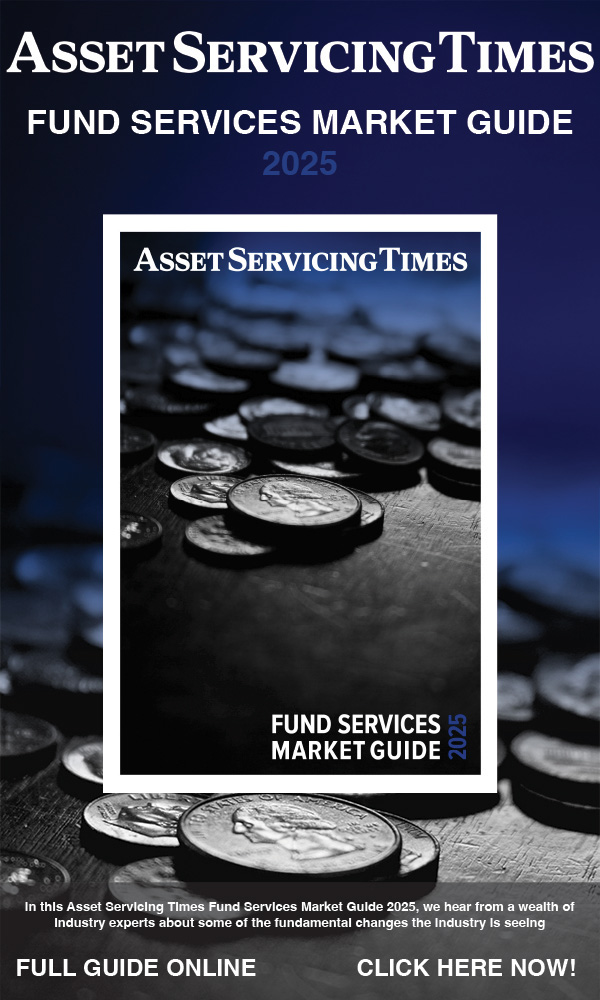Stablecoins and tokenised deposits
23 Jul 2025
Lamine Brahimi, co-founder and managing partner of Taurus, looks at how institutions should be taking a dual-track strategy to digital assets
 Image: techsolution/stock.adobe.com
Image: techsolution/stock.adobe.com
The world is increasingly embracing blockchain technology, stablecoins and tokenised assets — which stand as the most approachable assets built on decentralised protocols.
These blockchain-based assets hold the potential to onboard a new wave of retail users, institutional investors, and even major businesses.
Major financial players are already exploring the launch of their own stablecoin endeavors. Names include J.P. Morgan, Bank of America, and Citigroup, but the only entity to actually release a working asset thus far is France’s Societe Generale.
The fact that retail giants like Walmart and Amazon are considering their own stablecoins only further cements the growing mainstream appeal of these digital assets.
Stablecoins come with many powerful benefits, but banks and other financial institutions should carefully consider their approach. While stablecoins offer significant opportunities, without proper design and oversight, these assets can come with the same (or even worse) risks that this space has been trying to move away from.
The key is finding the right balance, whether through stablecoins, tokenised deposits, or a combination of both approaches.
The fine print with stablecoins
When boiled down to their core essence, stablecoins are actually very similar to the existing idea of ‘demand deposits’. They are backed by the bank’s assets and can be used for a variety of financial purposes in lieu of fiat currency. This brings the benefits of efficient transfers enabling global transactions, 24/7 settlement, reduced costs, and the ability to tap into new markets and customer segments.
However, there is a critical difference. Stablecoins, in the existing regulatory landscape, do not universally have comprehensive protections surrounding their value, the way that demand deposits do.
They fulfill a similar function, but they are operating without any type of safety net should their respective financial institutions fail. This is changing rapidly with legislation like the GENIUS Act in the US, which aims to provide clearer regulatory frameworks for stablecoins.
That being said, the concern is not just theoretical. The 2022 collapse of Terra/Luna offered a stark reminder of what can go wrong when asset design lacks proper oversight — especially in a globally interconnected financial system.
Risks were outlined as far back as 2022 by the Bank for International Settlements. Without the right design, it simply is not safe for financial institutions to issue their own stablecoin assets.
Fortunately, the landscape has evolved significantly, with clearer regulatory guidance and better understanding of best practices emerging.
Further, with proper reserves, regulatory oversight, and institutional backing, bank-issued stablecoins offer significant advantages for both institutions and their customers.
A multi-pronged approach: Stablecoins and tokenised deposits
While stablecoins offer compelling benefits, tokenised deposits provide a much-needed complementary approach that banks can also leverage to enter into the world of tokenisation.
Rather than viewing these as mutually exclusive options, many institutions are exploring how both can serve different use cases and customer needs.
Tokenised deposits, as opposed to stablecoins, carry the regulatory protection that comes with the underlying assets. This can make for the best of both worlds: a digitally native token that still has all of the safeguards of traditional banking. Meanwhile, stablecoins can offer advantages for cross-border payments, new market entry, and serving customers who prefer the flexibility of blockchain-based assets.
Thanks to the utility of both approaches, the growing list of companies that seek to engage with blockchain now has multiple paths that allow them to begin integrating these services. Banks can start with tokenised deposits for conservative use cases while exploring stablecoins for more innovative applications, knowing that demand exists for both. Best of all, they can do all of this while leveraging the trust that their customers already have in their products.
Both stablecoins and tokenised deposits can support many of the same use cases, though each offers unique advantages.
They can provide instant payments anywhere in the world for just fractions of a cent, full automation of complex financial services, and a fully transparent environment that allows for clear regulatory compliance from all parties involved.
Of course, well-defined regulatory frameworks are essential. In jurisdictions where such guidelines exist, smart contracts can automate compliance, preventing non-compliant or fraudulent transactions at the protocol level.
This final point does require that well-defined regulatory guidelines exist that can be followed. In any jurisdiction that offers such definitions, automated enforcement will become simple, as programmable smart contracts won’t even allow for fraudulent transactions to be made in the first place.
The future involves banks issuing both stablecoins and tokenizing deposits, each serving specific purposes within a comprehensive digital asset strategy. Major institutions are positioning themselves for this because they recognise the amplified value of these use cases and different solutions.
Doing so allows financial institutions to maximise their opportunities while also staying within both government protection and regulatory clarity, a smart approach to entering decentralised services.
These blockchain-based assets hold the potential to onboard a new wave of retail users, institutional investors, and even major businesses.
Major financial players are already exploring the launch of their own stablecoin endeavors. Names include J.P. Morgan, Bank of America, and Citigroup, but the only entity to actually release a working asset thus far is France’s Societe Generale.
The fact that retail giants like Walmart and Amazon are considering their own stablecoins only further cements the growing mainstream appeal of these digital assets.
Stablecoins come with many powerful benefits, but banks and other financial institutions should carefully consider their approach. While stablecoins offer significant opportunities, without proper design and oversight, these assets can come with the same (or even worse) risks that this space has been trying to move away from.
The key is finding the right balance, whether through stablecoins, tokenised deposits, or a combination of both approaches.
The fine print with stablecoins
When boiled down to their core essence, stablecoins are actually very similar to the existing idea of ‘demand deposits’. They are backed by the bank’s assets and can be used for a variety of financial purposes in lieu of fiat currency. This brings the benefits of efficient transfers enabling global transactions, 24/7 settlement, reduced costs, and the ability to tap into new markets and customer segments.
However, there is a critical difference. Stablecoins, in the existing regulatory landscape, do not universally have comprehensive protections surrounding their value, the way that demand deposits do.
They fulfill a similar function, but they are operating without any type of safety net should their respective financial institutions fail. This is changing rapidly with legislation like the GENIUS Act in the US, which aims to provide clearer regulatory frameworks for stablecoins.
That being said, the concern is not just theoretical. The 2022 collapse of Terra/Luna offered a stark reminder of what can go wrong when asset design lacks proper oversight — especially in a globally interconnected financial system.
Risks were outlined as far back as 2022 by the Bank for International Settlements. Without the right design, it simply is not safe for financial institutions to issue their own stablecoin assets.
Fortunately, the landscape has evolved significantly, with clearer regulatory guidance and better understanding of best practices emerging.
Further, with proper reserves, regulatory oversight, and institutional backing, bank-issued stablecoins offer significant advantages for both institutions and their customers.
A multi-pronged approach: Stablecoins and tokenised deposits
While stablecoins offer compelling benefits, tokenised deposits provide a much-needed complementary approach that banks can also leverage to enter into the world of tokenisation.
Rather than viewing these as mutually exclusive options, many institutions are exploring how both can serve different use cases and customer needs.
Tokenised deposits, as opposed to stablecoins, carry the regulatory protection that comes with the underlying assets. This can make for the best of both worlds: a digitally native token that still has all of the safeguards of traditional banking. Meanwhile, stablecoins can offer advantages for cross-border payments, new market entry, and serving customers who prefer the flexibility of blockchain-based assets.
Thanks to the utility of both approaches, the growing list of companies that seek to engage with blockchain now has multiple paths that allow them to begin integrating these services. Banks can start with tokenised deposits for conservative use cases while exploring stablecoins for more innovative applications, knowing that demand exists for both. Best of all, they can do all of this while leveraging the trust that their customers already have in their products.
Both stablecoins and tokenised deposits can support many of the same use cases, though each offers unique advantages.
They can provide instant payments anywhere in the world for just fractions of a cent, full automation of complex financial services, and a fully transparent environment that allows for clear regulatory compliance from all parties involved.
Of course, well-defined regulatory frameworks are essential. In jurisdictions where such guidelines exist, smart contracts can automate compliance, preventing non-compliant or fraudulent transactions at the protocol level.
This final point does require that well-defined regulatory guidelines exist that can be followed. In any jurisdiction that offers such definitions, automated enforcement will become simple, as programmable smart contracts won’t even allow for fraudulent transactions to be made in the first place.
The future involves banks issuing both stablecoins and tokenizing deposits, each serving specific purposes within a comprehensive digital asset strategy. Major institutions are positioning themselves for this because they recognise the amplified value of these use cases and different solutions.
Doing so allows financial institutions to maximise their opportunities while also staying within both government protection and regulatory clarity, a smart approach to entering decentralised services.
NO FEE, NO RISK
100% ON RETURNS If you invest in only one asset servicing news source this year, make sure it is your free subscription to Asset Servicing Times
100% ON RETURNS If you invest in only one asset servicing news source this year, make sure it is your free subscription to Asset Servicing Times



